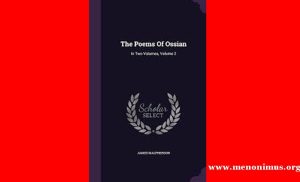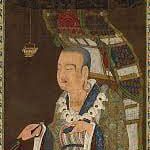Ossianic Cycle-A Review
Ossianic Cycle-A Review
Ossianic Cycle-A Review
Introduction:
The Ossianic Cycle, a collection of epic poems and narratives, holds a significant place in the world of Celtic literature and mythology. Purportedly penned by the Gaelic poet Ossian (Oisín), these texts have sparked debates and discussions regarding their authenticity and origin. This review aims to delve into the key aspects of the Ossianic Cycle, including its historical context, themes, literary qualities, and influence.
Historical Context:
The Ossianic Cycle is attributed to James Macpherson, an 18th-century Scottish poet and writer. Macpherson claimed that he had translated and compiled these texts from ancient Gaelic manuscripts, which he attributed to the legendary bard Ossian. However, the authenticity of these claims has been widely debated, with some scholars arguing that Macpherson’s work is more an invention than a translation. Regardless of its origins, the Ossianic Cycle reflects a fascination with Gaelic history, mythology, and oral tradition during a time of growing interest in national identities.
Themes and Motifs:
The Ossianic Cycle revolves around several recurring themes and motifs:
Heroism and Valor: The poems are replete with tales of heroic warriors and their feats in battle, often focusing on their courage, honor, and loyalty. Characters like Fingal and Ossian exemplify these qualities.
Nature and Landscape: The cycle vividly describes the natural landscapes of Scotland and Ireland, emphasizing their beauty and significance. Nature serves as a backdrop for both epic battles and contemplative moments.
Tragic Love: Tragic love stories are woven into the cycle, adding an emotional dimension. The love between Ossian and Niamh, for instance, adds a layer of vulnerability to the otherwise heroic narratives.
Ancestry and Lineage: The Ossianic poems frequently highlight genealogy and lineage, emphasizing the connections between characters and their ancestors. This reflects the importance of heritage in Celtic culture.
Supernatural Elements: The cycle introduces elements of the supernatural, including encounters with otherworldly beings and mystical landscapes. These elements blur the line between reality and the mythical realm.
Literary Qualities:
The Ossianic Cycle showcases several literary qualities that contribute to its enduring appeal:
Poetic Language: The poems are known for their lyrical and poetic language, featuring vivid descriptions, metaphors, and rhythmic patterns that enhance the storytelling.
Oral Tradition: The cycle draws from the oral tradition of storytelling, employing repetition, alliteration, and other techniques to engage the audience and create a sense of continuity with ancient bardic traditions.
Emotional Depth: The poems explore a range of emotions, from the grandeur of battles to the intimacy of personal relationships, adding depth to the characters and narratives.
Atmosphere and Mood: The cycle effectively creates atmospheric settings that transport readers to the landscapes and events described in the poems, immersing them in the world of ancient Celtic legends.
Influence and Legacy:
The Ossianic Cycle’s impact extends beyond literature:
Cultural Revival: The cycle played a role in reviving interest in Gaelic culture and history during a period of political and cultural change in Scotland and Ireland.
Romantic Movement: The cycle’s emphasis on nature, emotion, and the past resonated with the Romantic movement, influencing poets and writers of the time.
National Identity: The Ossianic Cycle contributed to the construction of national identities by connecting these narratives to the history and culture of Scotland and Ireland.
Conclusion:
While the authenticity of the Ossianic Cycle remains contested, its cultural and literary significance is undeniable. Whether viewed as genuine Gaelic legends or the imaginative work of James Macpherson, the cycle offers insights into Celtic mythology, historical contexts, and the evolution of literary traditions. Its themes, literary qualities, and enduring influence continue to captivate readers and scholars interested in exploring the rich tapestry of Celtic heritage. 0 0 0.
You May Like: Beowulf-A Review
N.B. The article originally belongs to the book entitled ‘The Reviews of Epic Literature Around the World Vol-II‘ by Menonim Menonimus.








